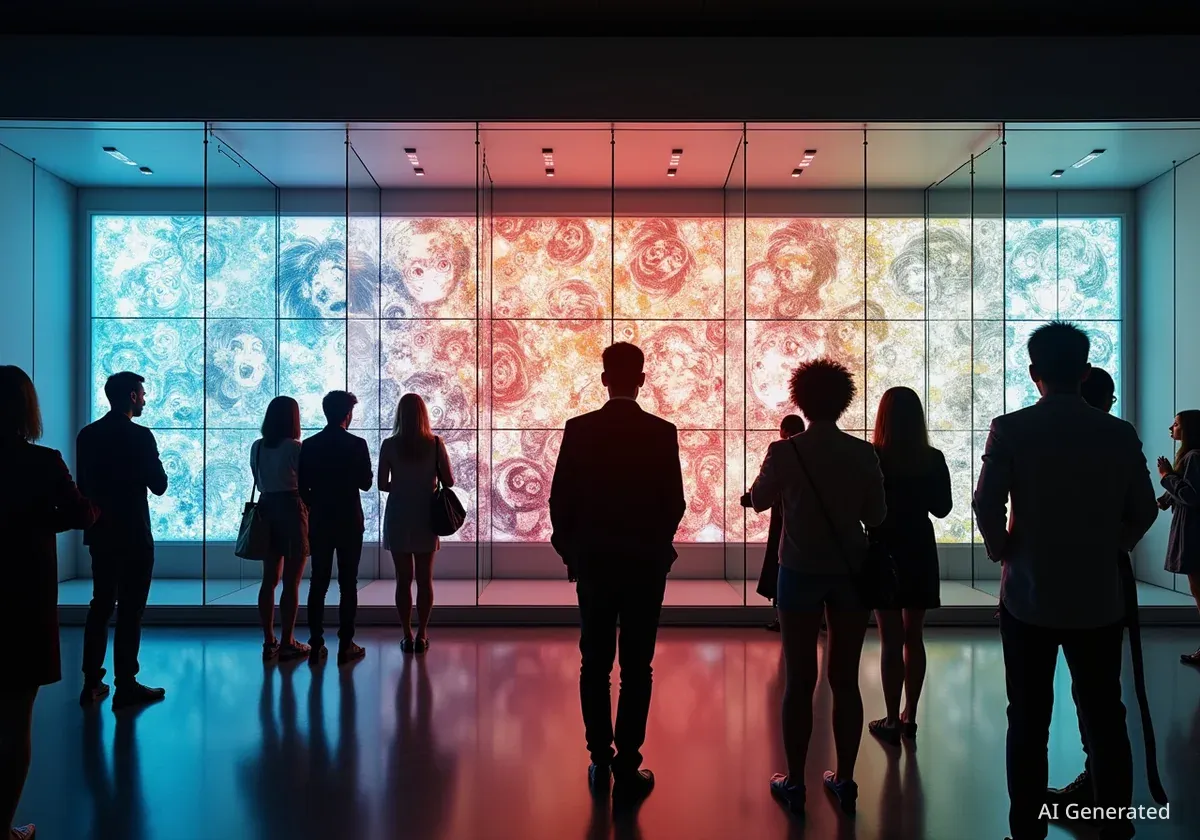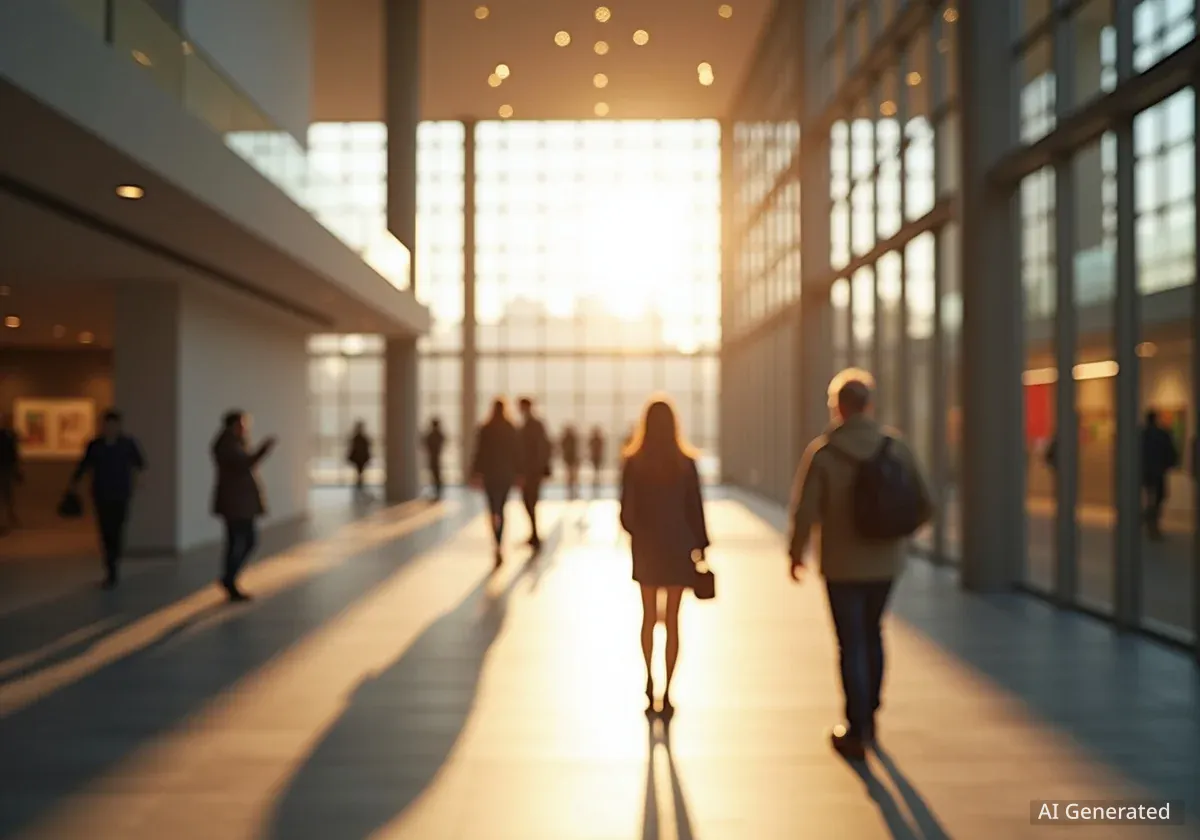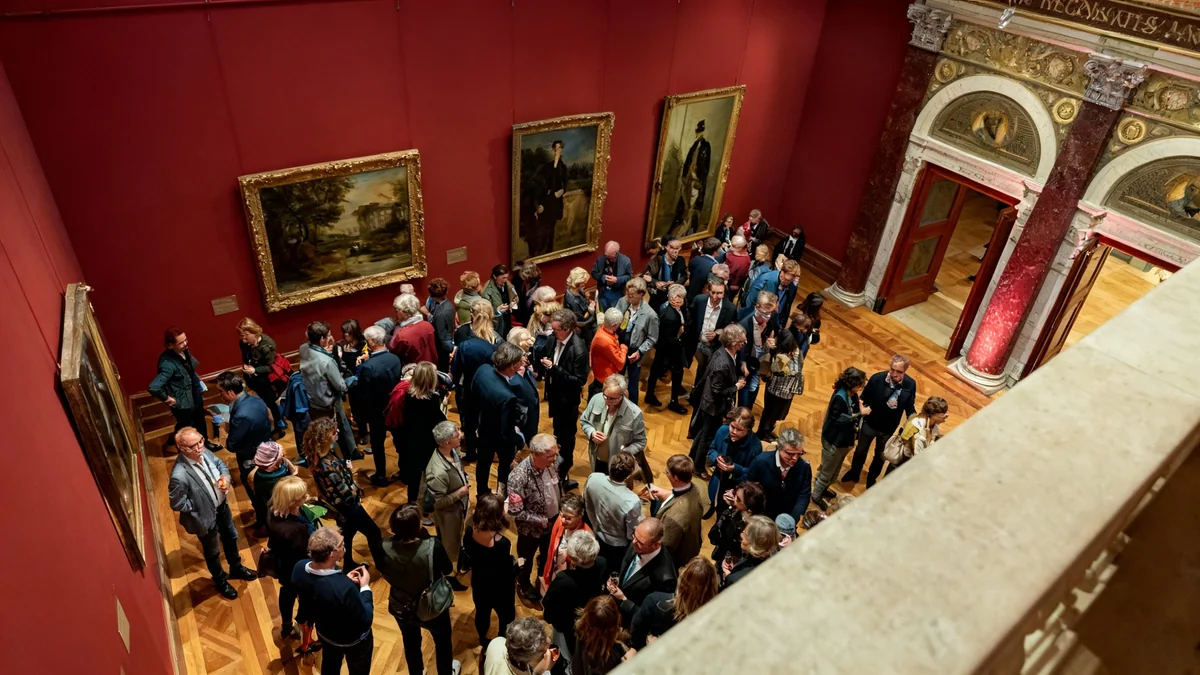San Francisco's De Young Museum has opened a new exhibition showcasing manga art. This marks the first large-scale display of manga in North America. The exhibit features over 600 pieces, including artwork, comic books, and animated features. It aims to introduce visitors to the diverse world of manga, an art form that has gained global popularity since World War II.
Key Takeaways
- The De Young Museum is hosting North America's first major manga exhibition.
- Over 600 items are on display, covering various mediums from art to animation.
- Manga's international appeal grew significantly after World War II.
- The exhibition runs through January and includes interactive elements.
Manga's Global Reach and Evolution
Manga, which translates to "whimsical pictures" from Japanese, has evolved into a global phenomenon. Its storytelling style is distinct and expressive. Curator Nicole Rousmaniere notes its widespread appeal. "What's interesting is that manga that's read in America and manga that's read in Japan is read in Saudi Arabia, is read in Indonesia, is in Malaysia, the same titles are popular throughout the world," Rousmaniere stated.
The art form's popularity surged after World War II. This period saw manga expand beyond its Japanese origins to capture audiences worldwide. Modern anime series, like "JoJo's Bizarre Adventure," blend Western styles and music with fantastical narratives. These series attract younger viewers and demonstrate manga's adaptability.
Fact File: Manga's Impact
- Origin: Japan
- Meaning: "Whimsical pictures"
- Global Popularity: Exploded after World War II
- Exhibit Items: Over 600 pieces across different media
Diversity in Storytelling and Style
Manga is known for its incredible diversity. It caters to a wide range of audiences and interests. Different stylistic approaches exist within the genre. Rousmaniere explains this variety: "You have manga that is aimed towards a female market, you have manga that's aimed towards a male market. There are different stylistic things."
This diversity extends to themes and character portrayal. Exaggerated facial expressions are a hallmark of manga. They convey strong emotions. Storylines often feature shifts in time and space, adding to the dynamic nature of the narratives. This allows for complex emotional depth and adventurous plots.
"You have manga that is aimed towards a female market, you have manga that's aimed towards a male market. There are different stylistic things." – Nicole Rousmaniere, Exhibition Curator
Artist Spotlight: Mari Yamazaki's Unique Approach
Artist Mari Yamazaki represents the innovative spirit within manga. She trained as a classical painter but developed a passion for manga. Her mother initially disapproved, believing it would hinder her studies. "My mother said that if I read too much manga, it makes me stupid," Yamazaki recalled.
Despite this, Yamazaki combined the popular manga form with her classical art background. She often places her characters in historical settings, such as the ancient Roman Empire. This fusion creates a distinctive artistic style. Yamazaki's journey highlights the unexpected paths artists can take. She never planned to be a manga artist, having initially aimed to be an oil painter. This led her to study classical art in Italy.
Background: The De Young Museum
The De Young Museum is located in San Francisco's Golden Gate Park. It is a prominent art institution in the Western United States. The museum features American art from the 17th through 21st centuries, international textiles, costumes, and art from Africa, Oceania, and the Americas. Hosting the manga exhibition expands its diverse cultural offerings.
Experiencing the Exhibition
The exhibition is designed to make manga accessible to all visitors. It aims to help them understand the art form's unique storytelling methods. Visitors will learn how to read manga, which often involves reading from right to left. The goal is for attendees to gain a new skill. Curator Rousmaniere suggests, "And at the end of this exhibition, you will have gained a new skill. You will become fluent in manga."
The interactive nature of the exhibit allows for a deeper engagement with the material. Guests can immerse themselves in a world filled with emotion and adventure. This experience is now enjoyed by millions globally. The exhibition provides a comprehensive look at manga's artistic, cultural, and storytelling elements.
Interactive Learning and Cultural Exchange
The museum has structured the exhibition to be an educational journey. It guides visitors through the nuances of manga. This includes understanding its visual language, character development, and narrative structures. The display also showcases manga's influence on global pop culture and its role as a medium for diverse stories.
This initiative helps bridge cultural gaps. It introduces an important aspect of Japanese culture to a broader North American audience. The exhibition fosters an appreciation for manga's artistic merit and its impact on contemporary storytelling. It offers a unique opportunity to explore a vibrant and influential art form.
- The exhibit is structured to teach visitors how to read manga.
- It provides insights into character emotions and plot progression.
- The exhibition aims to make visitors "fluent in manga" by its conclusion.
- It highlights manga's role in global entertainment and art.
The exhibition opened to the public this weekend. It will run through January, offering several months for visitors to explore. This significant event underscores the growing international appreciation for manga as a sophisticated and impactful art form.




